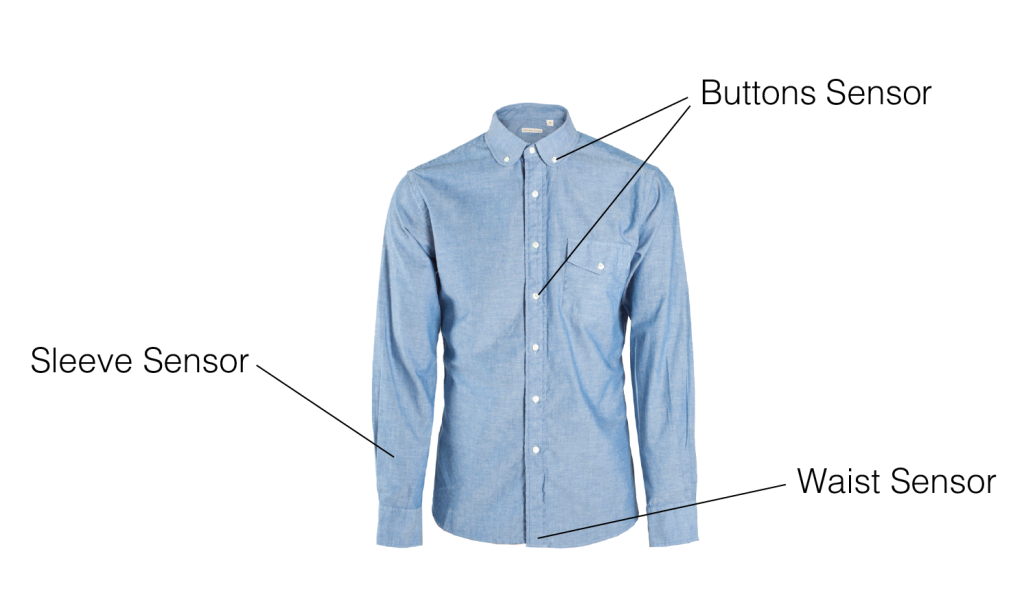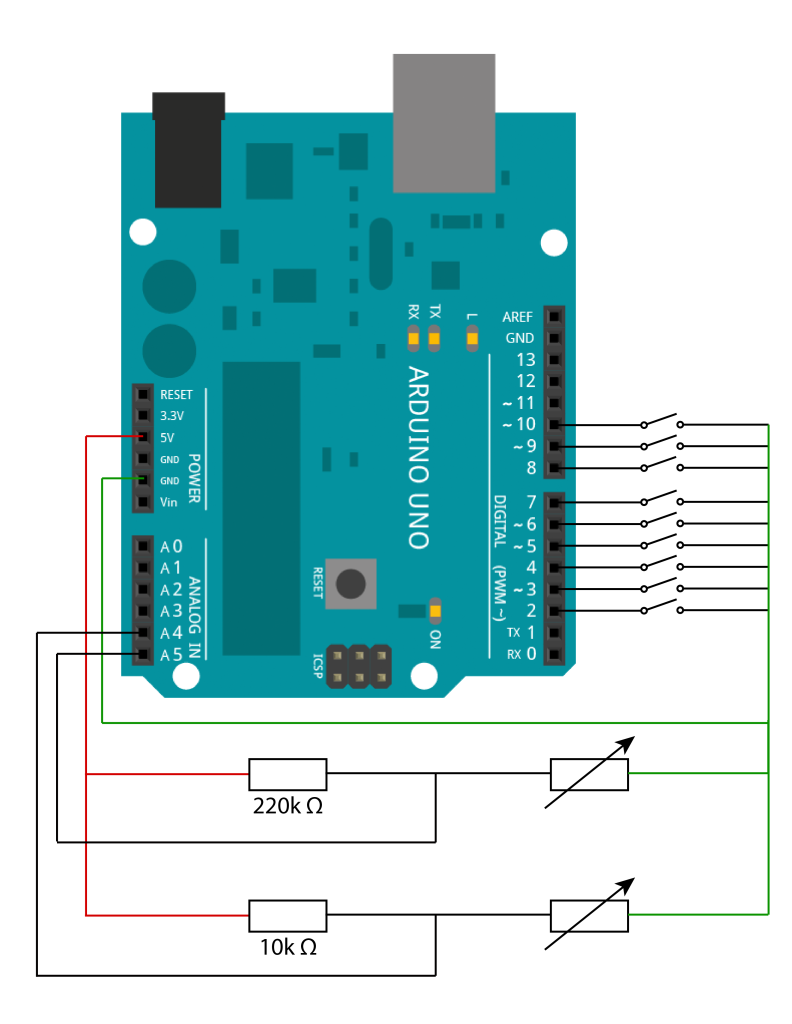Gruppe 1: Dokumentation
 FROM IDEAS TO CONCEPT
We started off with thinking of objects we could change into something audible since we were required to come up with interactive wearable or implants.
Coming up with ideas of how to help people with audible objects became a little difficult due to people relying more on visual aid than audio ones. So moving onto another topic, it seemed almost logical to create something for the blind. We tried thinking of what blind people need help with. In the end, the thought of integrating more sounds into their daily life might actually confuse them more than help them so we decided to put that idea aside and start on a new concept.
-----------------------------------
"Kleider machen Leute"; this is the phrase we took as an inspiration for our concept.
FROM IDEAS TO CONCEPT
We started off with thinking of objects we could change into something audible since we were required to come up with interactive wearable or implants.
Coming up with ideas of how to help people with audible objects became a little difficult due to people relying more on visual aid than audio ones. So moving onto another topic, it seemed almost logical to create something for the blind. We tried thinking of what blind people need help with. In the end, the thought of integrating more sounds into their daily life might actually confuse them more than help them so we decided to put that idea aside and start on a new concept.
-----------------------------------
"Kleider machen Leute"; this is the phrase we took as an inspiration for our concept.
 People choose what clothes they wear everyday so by definition, clothes can describe people by their character, mood, attitude and behaviour. Our goal is to create clothes that can define people not by their appearance but by their actions of how they interact with their clothes. The sounds that emit from the clothes depend on what you do with them: by folding up your sleeve, zipping or buttoning up your shirt or jacket, tucking your shirt in your pants, the sounds that the clothes make will vary.
FOLEY MOCKUP
We experimented with different objects to express different impressions to see what effect they had on people. The difficulty we experienced during the experiments was finding sounds that sounded positive because negative sounds were surprisingly easy to find.
PROTOTYPE
Using a collar shirt as a prototype, we decided to concentrate the interaction on the buttons, the sleeves and one sensor on the waist. The sounds that were used were recorded in the sound studio from objects and also from our voices. During the foley mockup, we also noticed that the sounds would have to be a little more personal to each person. Hence, we decided to record our voice and edit it using Audacity, Reaper and MuLab.
People choose what clothes they wear everyday so by definition, clothes can describe people by their character, mood, attitude and behaviour. Our goal is to create clothes that can define people not by their appearance but by their actions of how they interact with their clothes. The sounds that emit from the clothes depend on what you do with them: by folding up your sleeve, zipping or buttoning up your shirt or jacket, tucking your shirt in your pants, the sounds that the clothes make will vary.
FOLEY MOCKUP
We experimented with different objects to express different impressions to see what effect they had on people. The difficulty we experienced during the experiments was finding sounds that sounded positive because negative sounds were surprisingly easy to find.
PROTOTYPE
Using a collar shirt as a prototype, we decided to concentrate the interaction on the buttons, the sleeves and one sensor on the waist. The sounds that were used were recorded in the sound studio from objects and also from our voices. During the foley mockup, we also noticed that the sounds would have to be a little more personal to each person. Hence, we decided to record our voice and edit it using Audacity, Reaper and MuLab.
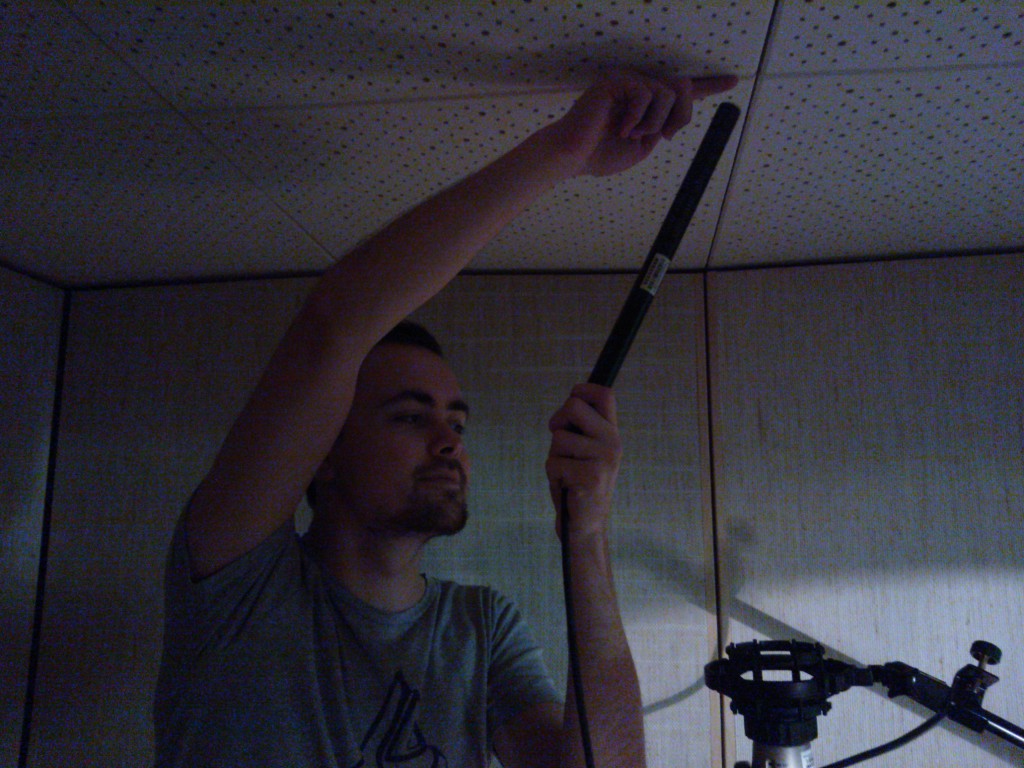 Structure
Structure

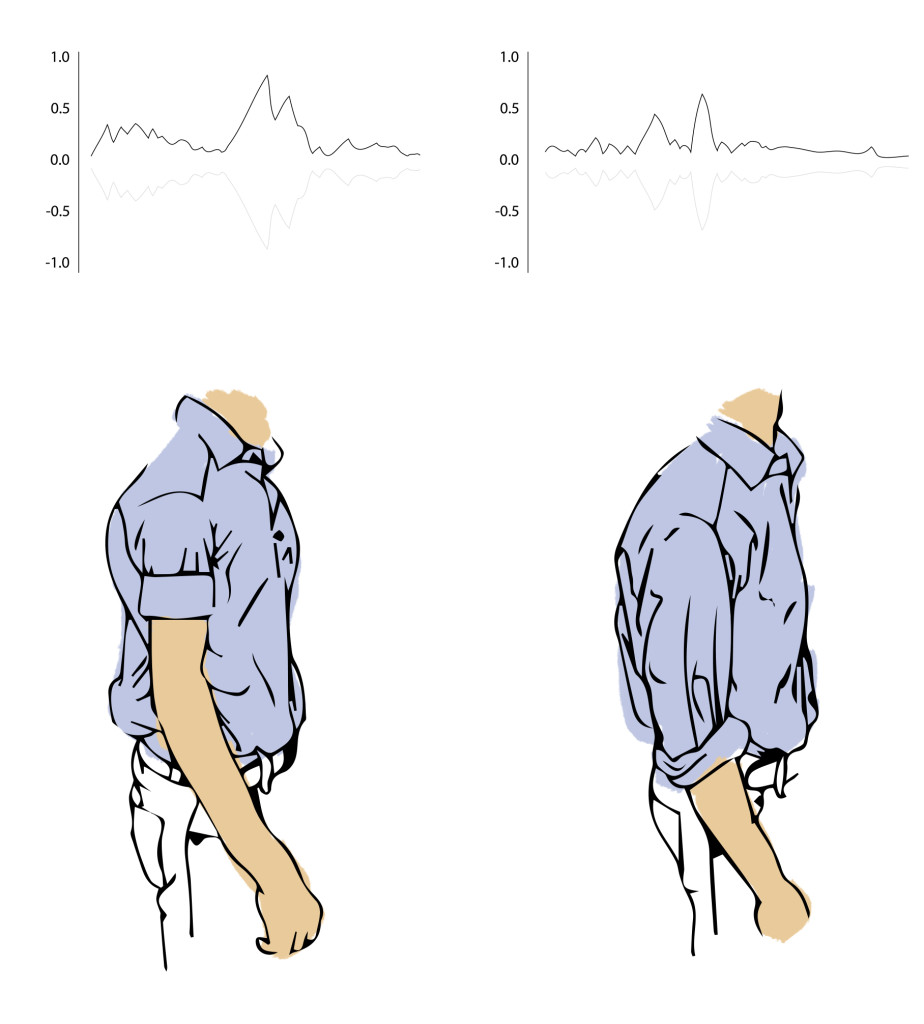
Sensors
Three different kind of sensors were attached onto the collar shirt: Metal buttons which can be attached to each other easily instead of the plastic buttons on the shirt, a special resistor for the sleeves and a light sensor for the bottom of the shirt. Altogether, there are eleven sensors connected from the shirt to the Arduino board.
Schematic
The electronic part on the Arduino is not that complicated; the whole process was thought through and solved in one afternoon (see diagram below). The more problematic aspect was the shirt because there are much more sensors and wires to connect with.
Sewing the prototype We had a lot of work with sewing in our project. We decided to use conductive threads instead of classic wires, therefore we reduced the weight and optimized the handling of such a shirt. The conductive thread was tricky for sewing (the thread is quite brittle and tying knots were a problem) but there were no problems with the circuits after the sewing was done. Since the thread was used to create circuits on the shirt, we still had to attach a soldering eyelet to attach the wires that connected to the Arduino. This was done without problems but the whole sewing process, although easily explained, took us longer than expected.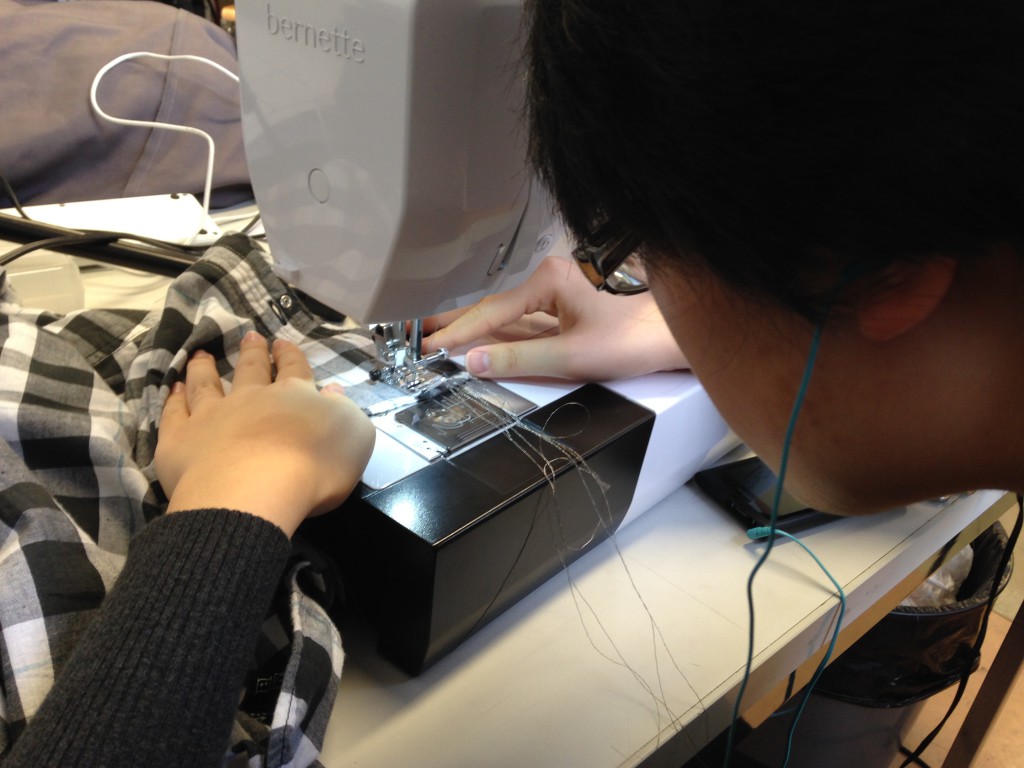
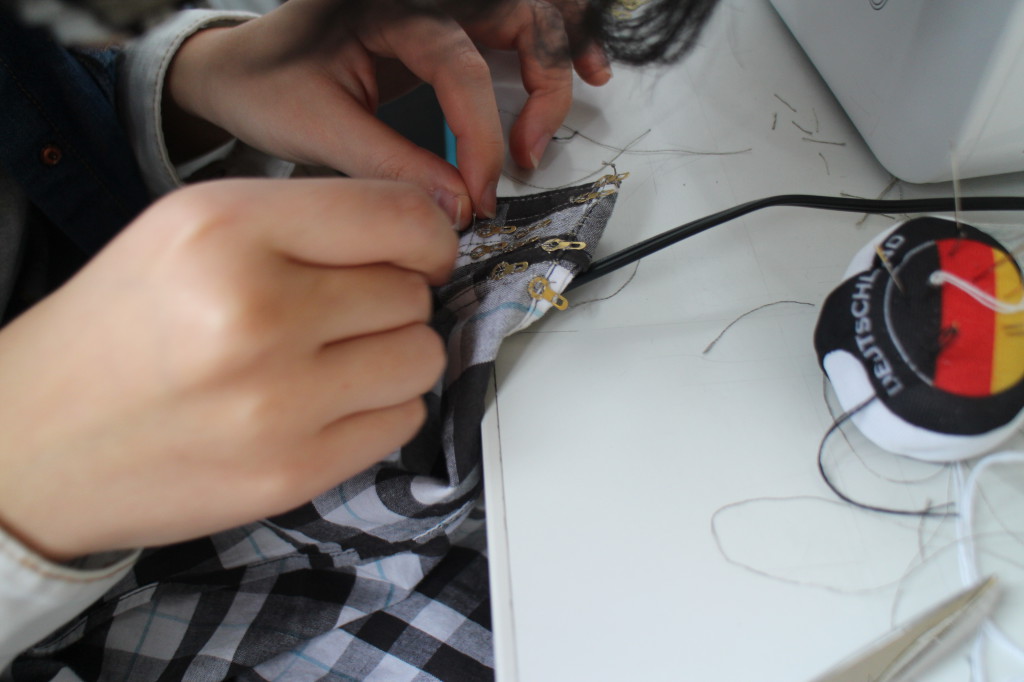 Final version of the prototype
In the end, we managed to get the shirt to work with the most important functions (buttoning up the shirt and folding up the sleeve) and the first sounds.
SOUNDLIBRARY
These are our final sounds we are using in our prototype.
Here are some of our developing sounds.
FOR THE FUTURE
There is a concept of expanding this project we had to set aside due to the shortage of time:
Clothes influencing each other: If clothes are able to influence each other, it would be a whole new aspect of how people would wear/perceive their clothes. Just by washing the dirty clothes in the washing machine, a whole new set of clothes would be made just because of the sounds they produce when mixed together with other clothes. It would be even possible to influence other people through clothes by putting someone's jacket over another person's one.
Final version of the prototype
In the end, we managed to get the shirt to work with the most important functions (buttoning up the shirt and folding up the sleeve) and the first sounds.
SOUNDLIBRARY
These are our final sounds we are using in our prototype.
Here are some of our developing sounds.
FOR THE FUTURE
There is a concept of expanding this project we had to set aside due to the shortage of time:
Clothes influencing each other: If clothes are able to influence each other, it would be a whole new aspect of how people would wear/perceive their clothes. Just by washing the dirty clothes in the washing machine, a whole new set of clothes would be made just because of the sounds they produce when mixed together with other clothes. It would be even possible to influence other people through clothes by putting someone's jacket over another person's one. 